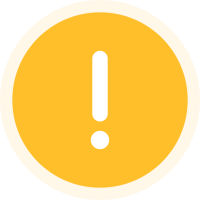Moon phase ~ moon calendar
moon phase,moon calendar
开发者: Moon Calendar.Ltd
中国
版本统计
233天16小时
最新版本上线距今
6
近1年版本更新次数
2024-02-06
全球最早版本上线日期
版本记录
版本: 1.6
版本更新日期
2024-04-03

Moon phase ~ moon calendar
moon phase,moon calendar
更新日志
fix bugs视频/截图
应用描述
If you're a fan of moon phases, if you want to know when there will be a full moon, if you want to know the moon phase calendar, download this app!
Functions:
Lunar phase: it can calculate the state of the moon in your area at this time based on your current location, including: lunar phase, lunar age, lunar distance, lunar altitude, azimuth, etc. You can visualize all this in the APP.
Lunar Calendar: Calendar established according to the lunar orbit law, combined with the AD calendar, you can trace the corresponding lunar calendar of each day as well as the sign of the moon phase.
Mood Diary: Record your daily mood states, you just need to choose the one that best matches you from 5 common states, which contain mood changes from the lowest to the most exuberant. By recording and tracking these mood states, combined with the moon phase calendar, you can find the rhythm of your life that best matches your own and natural laws.
Features:
Accurate data: we use the most scientific algorithm to calculate all the data by your latitude and longitude information, so you can always see the accurate moon phase, you can accurately predict: moonrise, moonset, sunrise, sunset, you can know when the next full moon is exactly what time.
Intuitive and simple: we designed all the functions extremely simple, you can use it easily without any burden and redundant operation, you can get what you want and get the information you want faster, it won't create any burden for you.
Elegant design: it does not only have powerful functions, it also has a beautiful temperament, he can bring you a pleasant feeling, because it is beautiful.
About Moon phases(These are from Wikipedia)
A lunar phase or Moon phase is the apparent shape of the Moon's directly sunlit portion as viewed from the Earth (because the Moon is tidally locked with the Earth, the same hemisphere is always facing the Earth).
In common usage, the four major phases are the new moon, the first quarter, the full moon and the last quarter; the four minor phases are waxing crescent, waxing gibbous, waning gibbous, and waning crescent. A lunar month is the time between successive recurrences of the same phase: due to the eccentricity of the Moon's orbit, this duration is not perfectly constant but averages about 29.5 days.
The appearance of the Moon (its phase) gradually changes over a lunar month as the relative orbital positions of the Moon around Earth, and Earth around the Sun, shift. The visible side of the Moon is sunlit to varying extents, depending on the position of the Moon in its orbit, with the sunlit portion varying from 0% (at new moon) to nearly 100% (at full moon).
There are four principal (primary, or major) lunar phases: the new moon, first quarter, full moon, and last quarter (also known as third or final quarter), when the Moon's ecliptic longitude is at an angle to the Sun (as viewed from the center of the Earth) of 0°, 90°, 180°, and 270° respectively.Each of these phases appears at slightly different times at different locations on Earth, and tabulated times are therefore always geocentric (calculated for the Earth's center).
Between the principal phases are intermediate phases, during which the apparent shape of the illuminated Moon is either crescent or gibbous. On average, the intermediate phases last one-quarter of a synodic month, or 7.38 days.
A new moon appears highest at the summer solstice and lowest at the winter solstice.
A first-quarter moon appears highest at the spring equinox and lowest at the autumn equinox.
A full moon appears highest at the winter solstice and lowest at the summer solstice.
A last-quarter moon appears highest at the autumn equinox and lowest at the spring equinox.
Non-Western cultures may use a different number of lunar phases; for example, traditional Hawaiian culture has a total of 30 phases (one per day)版本: 1.5
版本更新日期
2024-03-05

Moon phase ~ moon calendar
moon phase,moon calendar
更新日志
fix some bugs视频/截图
应用描述
If you're a fan of moon phases, if you want to know when there will be a full moon, if you want to know the moon phase calendar, download this app!
Functions:
Lunar phase: it can calculate the state of the moon in your area at this time based on your current location, including: lunar phase, lunar age, lunar distance, lunar altitude, azimuth, etc. You can visualize all this in the APP.
Lunar Calendar: Calendar established according to the lunar orbit law, combined with the AD calendar, you can trace the corresponding lunar calendar of each day as well as the sign of the moon phase.
Mood Diary: Record your daily mood states, you just need to choose the one that best matches you from 5 common states, which contain mood changes from the lowest to the most exuberant. By recording and tracking these mood states, combined with the moon phase calendar, you can find the rhythm of your life that best matches your own and natural laws.
Features:
Accurate data: we use the most scientific algorithm to calculate all the data by your latitude and longitude information, so you can always see the accurate moon phase, you can accurately predict: moonrise, moonset, sunrise, sunset, you can know when the next full moon is exactly what time.
Intuitive and simple: we designed all the functions extremely simple, you can use it easily without any burden and redundant operation, you can get what you want and get the information you want faster, it won't create any burden for you.
Elegant design: it does not only have powerful functions, it also has a beautiful temperament, he can bring you a pleasant feeling, because it is beautiful.
About Moon phases(These are from Wikipedia)
A lunar phase or Moon phase is the apparent shape of the Moon's directly sunlit portion as viewed from the Earth (because the Moon is tidally locked with the Earth, the same hemisphere is always facing the Earth).
In common usage, the four major phases are the new moon, the first quarter, the full moon and the last quarter; the four minor phases are waxing crescent, waxing gibbous, waning gibbous, and waning crescent. A lunar month is the time between successive recurrences of the same phase: due to the eccentricity of the Moon's orbit, this duration is not perfectly constant but averages about 29.5 days.
The appearance of the Moon (its phase) gradually changes over a lunar month as the relative orbital positions of the Moon around Earth, and Earth around the Sun, shift. The visible side of the Moon is sunlit to varying extents, depending on the position of the Moon in its orbit, with the sunlit portion varying from 0% (at new moon) to nearly 100% (at full moon).
There are four principal (primary, or major) lunar phases: the new moon, first quarter, full moon, and last quarter (also known as third or final quarter), when the Moon's ecliptic longitude is at an angle to the Sun (as viewed from the center of the Earth) of 0°, 90°, 180°, and 270° respectively.Each of these phases appears at slightly different times at different locations on Earth, and tabulated times are therefore always geocentric (calculated for the Earth's center).
Between the principal phases are intermediate phases, during which the apparent shape of the illuminated Moon is either crescent or gibbous. On average, the intermediate phases last one-quarter of a synodic month, or 7.38 days.
A new moon appears highest at the summer solstice and lowest at the winter solstice.
A first-quarter moon appears highest at the spring equinox and lowest at the autumn equinox.
A full moon appears highest at the winter solstice and lowest at the summer solstice.
A last-quarter moon appears highest at the autumn equinox and lowest at the spring equinox.
Non-Western cultures may use a different number of lunar phases; for example, traditional Hawaiian culture has a total of 30 phases (one per day)版本: 1.3
版本更新日期
2024-02-26
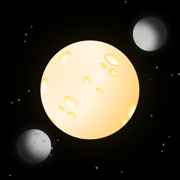
Moon phase ~ moon calendar
moon phase,moon calendar
更新日志
Change some descriptions
Fix some minor bugs视频/截图
应用描述
If you're a fan of moon phases, if you want to know when there will be a full moon, if you want to know the moon phase calendar, download this app!
Functions:
Lunar phase: it can calculate the state of the moon in your area at this time based on your current location, including: lunar phase, lunar age, lunar distance, lunar altitude, azimuth, etc. You can visualize all this in the APP.
Lunar Calendar: Calendar established according to the lunar orbit law, combined with the AD calendar, you can trace the corresponding lunar calendar of each day as well as the sign of the moon phase.
Mood Diary: Record your daily mood states, you just need to choose the one that best matches you from 5 common states, which contain mood changes from the lowest to the most exuberant. By recording and tracking these mood states, combined with the moon phase calendar, you can find the rhythm of your life that best matches your own and natural laws.
Features:
Accurate data: we use the most scientific algorithm to calculate all the data by your latitude and longitude information, so you can always see the accurate moon phase, you can accurately predict: moonrise, moonset, sunrise, sunset, you can know when the next full moon is exactly what time.
Intuitive and simple: we designed all the functions extremely simple, you can use it easily without any burden and redundant operation, you can get what you want and get the information you want faster, it won't create any burden for you.
Elegant design: it does not only have powerful functions, it also has a beautiful temperament, he can bring you a pleasant feeling, because it is beautiful.
About Moon phases(These are from Wikipedia)
A lunar phase or Moon phase is the apparent shape of the Moon's directly sunlit portion as viewed from the Earth (because the Moon is tidally locked with the Earth, the same hemisphere is always facing the Earth).
In common usage, the four major phases are the new moon, the first quarter, the full moon and the last quarter; the four minor phases are waxing crescent, waxing gibbous, waning gibbous, and waning crescent. A lunar month is the time between successive recurrences of the same phase: due to the eccentricity of the Moon's orbit, this duration is not perfectly constant but averages about 29.5 days.
The appearance of the Moon (its phase) gradually changes over a lunar month as the relative orbital positions of the Moon around Earth, and Earth around the Sun, shift. The visible side of the Moon is sunlit to varying extents, depending on the position of the Moon in its orbit, with the sunlit portion varying from 0% (at new moon) to nearly 100% (at full moon).
There are four principal (primary, or major) lunar phases: the new moon, first quarter, full moon, and last quarter (also known as third or final quarter), when the Moon's ecliptic longitude is at an angle to the Sun (as viewed from the center of the Earth) of 0°, 90°, 180°, and 270° respectively.Each of these phases appears at slightly different times at different locations on Earth, and tabulated times are therefore always geocentric (calculated for the Earth's center).
Between the principal phases are intermediate phases, during which the apparent shape of the illuminated Moon is either crescent or gibbous. On average, the intermediate phases last one-quarter of a synodic month, or 7.38 days.
A new moon appears highest at the summer solstice and lowest at the winter solstice.
A first-quarter moon appears highest at the spring equinox and lowest at the autumn equinox.
A full moon appears highest at the winter solstice and lowest at the summer solstice.
A last-quarter moon appears highest at the autumn equinox and lowest at the spring equinox.
Non-Western cultures may use a different number of lunar phases; for example, traditional Hawaiian culture has a total of 30 phases (one per day)版本: 1.2
版本更新日期
2024-02-22

Moon phase ~ moon calendar
moon phase,moon calendar
更新日志
Welcome to using Moon Phase
-Fix some known Bugs
-Optimized the presentation of lunar phases应用描述
暂无应用描述数据
版本: 1.1
版本更新日期
2024-02-21

Moon phase calendar-Moon phase
lunar calendar,moon calendar
更新日志
fix bugs
add subscription视频/截图
应用描述
If you're a fan of moon phases, if you want to know when there will be a full moon, if you want to know the moon phase calendar, download this app!
Functions:
Lunar phase: it can calculate the state of the moon in your area at this time based on your current location, including: lunar phase, lunar age, lunar distance, lunar altitude, azimuth, etc. You can visualize all this in the APP.
Lunar Calendar: Calendar established according to the lunar orbit law, combined with the AD calendar, you can trace the corresponding lunar calendar of each day as well as the sign of the moon phase.
Mood Diary: Record your daily mood states, you just need to choose the one that best matches you from 5 common states, which contain mood changes from the lowest to the most exuberant. By recording and tracking these mood states, combined with the moon phase calendar, you can find the rhythm of your life that best matches your own and natural laws.
Features:
Accurate data: we use the most scientific algorithm to calculate all the data by your latitude and longitude information, so you can always see the accurate moon phase, you can accurately predict: moonrise, moonset, sunrise, sunset, you can know when the next full moon is exactly what time.
Intuitive and simple: we designed all the functions extremely simple, you can use it easily without any burden and redundant operation, you can get what you want and get the information you want faster, it won't create any burden for you.
Elegant design: it does not only have powerful functions, it also has a beautiful temperament, he can bring you a pleasant feeling, because it is beautiful.
About Moon phases(These are from Wikipedia)
A lunar phase or Moon phase is the apparent shape of the Moon's directly sunlit portion as viewed from the Earth (because the Moon is tidally locked with the Earth, the same hemisphere is always facing the Earth).
In common usage, the four major phases are the new moon, the first quarter, the full moon and the last quarter; the four minor phases are waxing crescent, waxing gibbous, waning gibbous, and waning crescent. A lunar month is the time between successive recurrences of the same phase: due to the eccentricity of the Moon's orbit, this duration is not perfectly constant but averages about 29.5 days.
The appearance of the Moon (its phase) gradually changes over a lunar month as the relative orbital positions of the Moon around Earth, and Earth around the Sun, shift. The visible side of the Moon is sunlit to varying extents, depending on the position of the Moon in its orbit, with the sunlit portion varying from 0% (at new moon) to nearly 100% (at full moon).
There are four principal (primary, or major) lunar phases: the new moon, first quarter, full moon, and last quarter (also known as third or final quarter), when the Moon's ecliptic longitude is at an angle to the Sun (as viewed from the center of the Earth) of 0°, 90°, 180°, and 270° respectively.Each of these phases appears at slightly different times at different locations on Earth, and tabulated times are therefore always geocentric (calculated for the Earth's center).
Between the principal phases are intermediate phases, during which the apparent shape of the illuminated Moon is either crescent or gibbous. On average, the intermediate phases last one-quarter of a synodic month, or 7.38 days.
A new moon appears highest at the summer solstice and lowest at the winter solstice.
A first-quarter moon appears highest at the spring equinox and lowest at the autumn equinox.
A full moon appears highest at the winter solstice and lowest at the summer solstice.
A last-quarter moon appears highest at the autumn equinox and lowest at the spring equinox.
Non-Western cultures may use a different number of lunar phases; for example, traditional Hawaiian culture has a total of 30 phases (one per day)预订版本: 1.0
版本更新日期
2024-02-06
预订转上架日期
2024-02-06
Moon phase calendar-Moon phase
lunar calendar,moon calendar
更新日志
暂无更新日志数据
应用描述
暂无应用描述数据

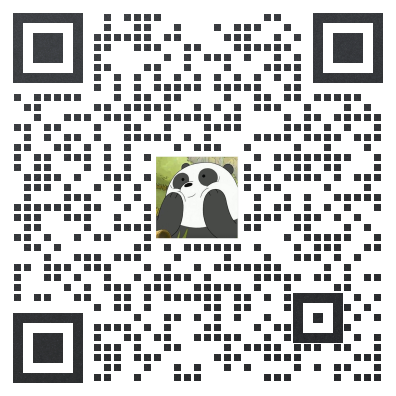

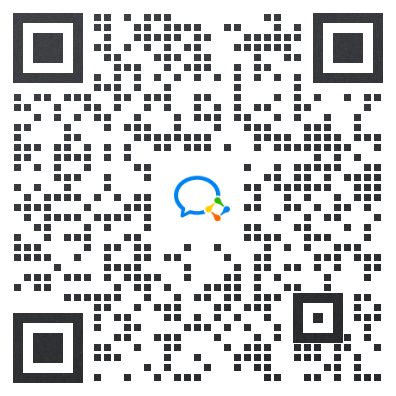
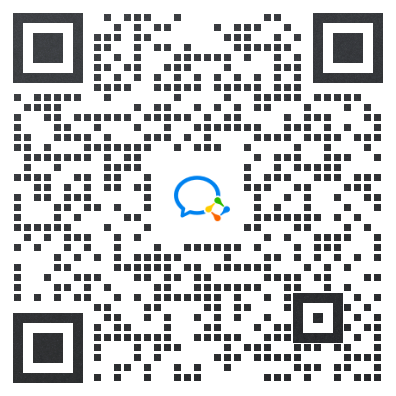
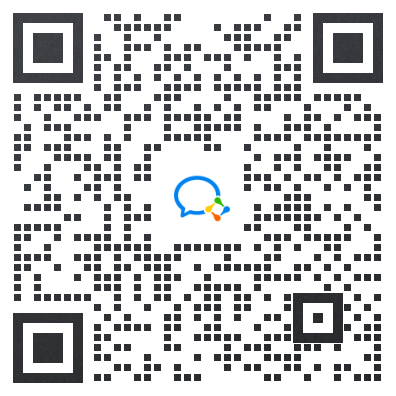




 京公网安备 11010502041000号
京公网安备 11010502041000号





